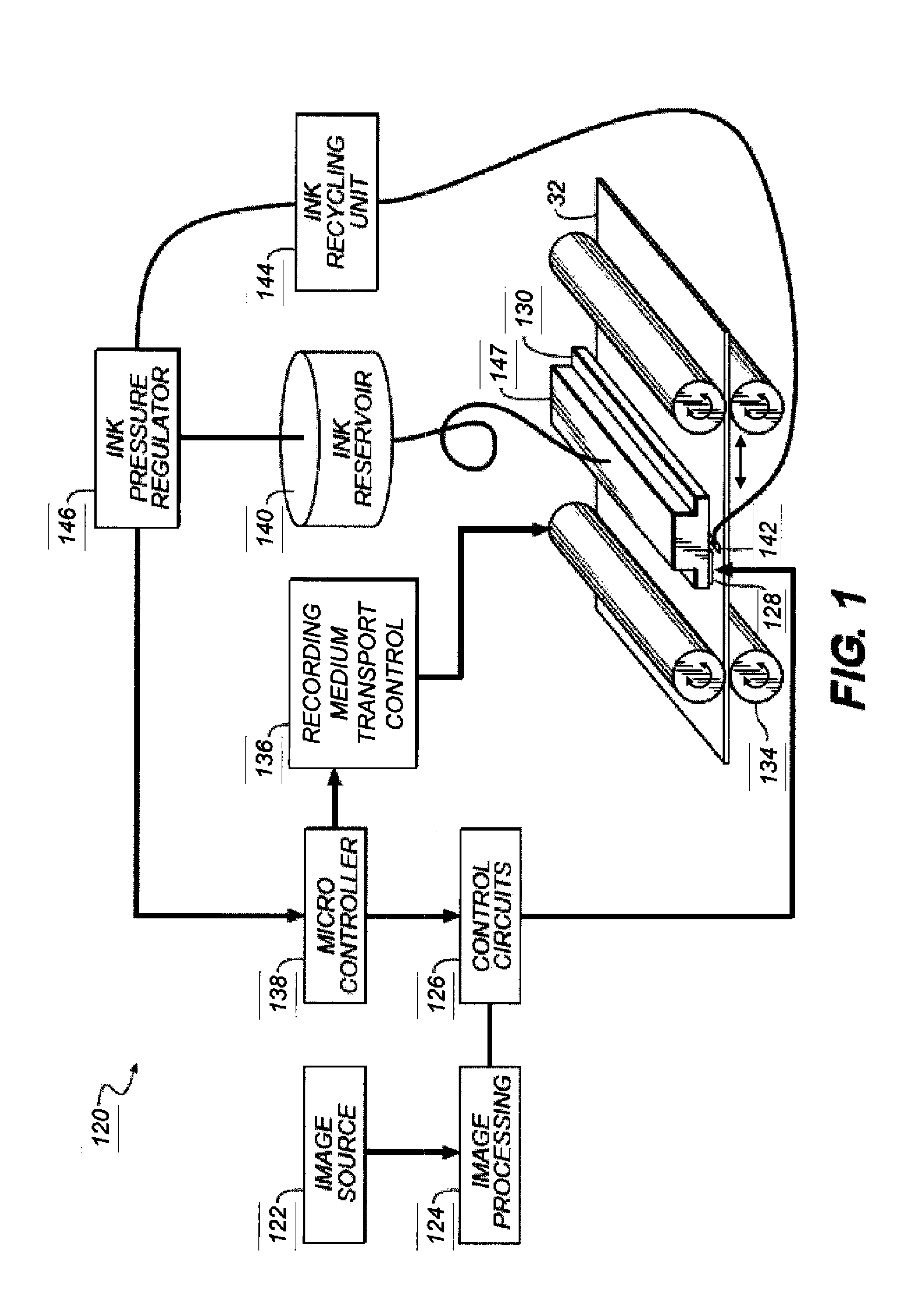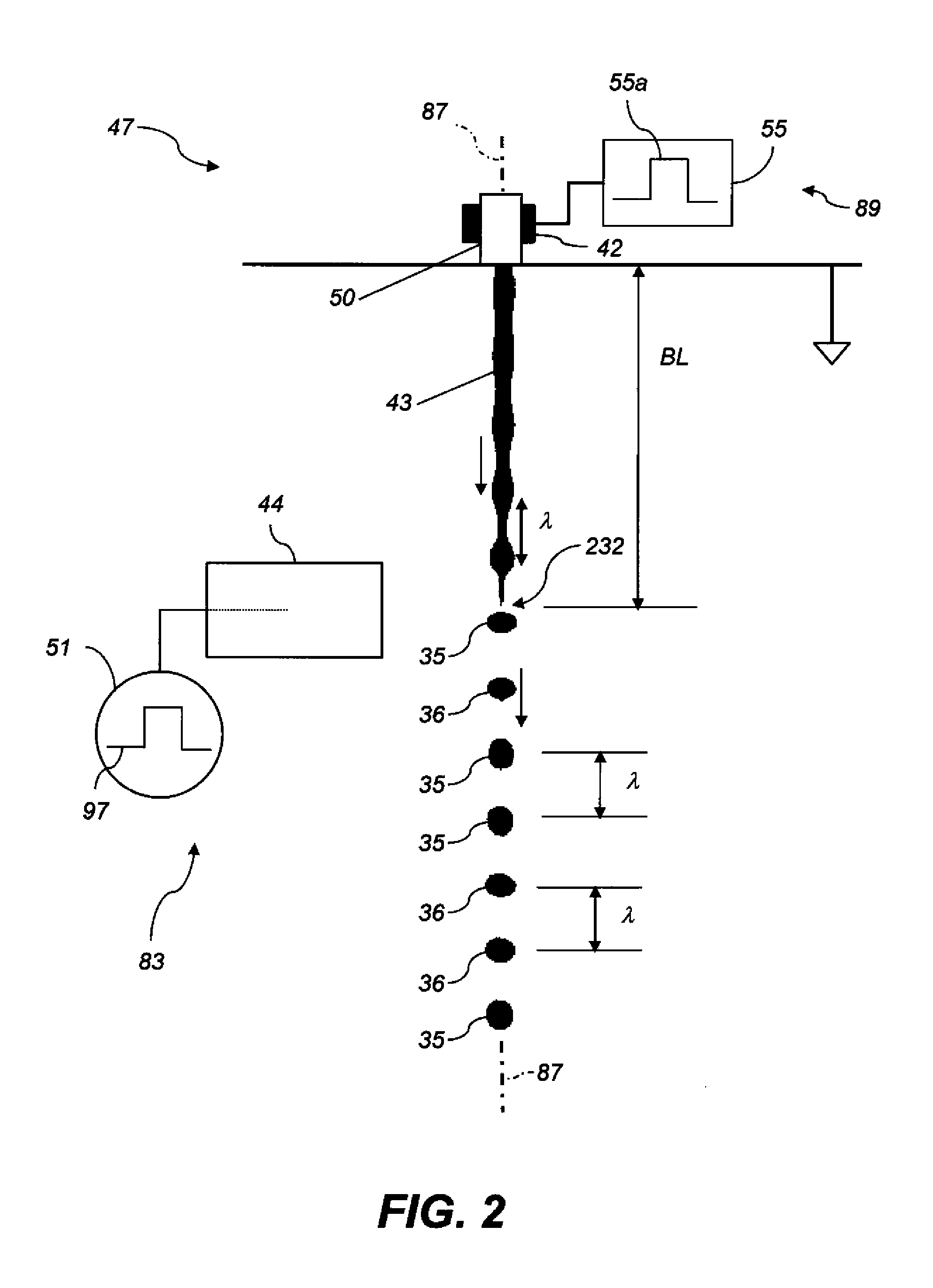Large-particle inkjet discharged-area development printing
a technology of discharged area and large-particle inkjet, which is applied in the direction of printing, duplicating/marking methods, etc., can solve the problems of limited use of purpose-made coated inkjet papers to improve image density, low image density of printed images, and inability to achieve high-quality printing results. , the effect of reducing paper deformation
- Summary
- Abstract
- Description
- Claims
- Application Information
AI Technical Summary
Benefits of technology
Problems solved by technology
Method used
Image
Examples
Embodiment Construction
[0041]Reference is made to commonly assigned, co-pending U.S. patent application Ser. Nos. 13 / 245,947, filed Sep. 27, 2011, entitled “INKJET PRINTER USING LARGE PARTICLES,” by Thomas N. Tombs, et al.; Ser. No. 13 / 245,971, filed Sep. 27, 2011, entitled “ELECTROGRAPHIC PRINTING USING FLUIDIC CHARGE DISSIPATION,” by Thomas N. Tombs, et al.; Ser. No. 13 / 245,957, filed Sep. 27, 2011, entitled “LARGE-PARTICLE INKJET PRINTING ON SEMIPOROUS PAPER,” by Thomas N. Tombs, et al.; Ser. No. 13 / 245,977, filed Sep. 27, 2011, filed, entitled “ELECTROGRAPHIC PRINTER USING FLUIDIC CHARGE DISSIPATION,” by Thomas N. Tombs, et al.; Ser. No. 13 / 245,964, filed Sep. 27, 2011, entitled “LARGE-PARTICLE SEMIPOROUS-PAPER INKJET PRINTER,” by Thomas N. Tombs, et al.; U.S. patent application Ser. No. 13 / 077,496, filed Mar. 31, 2011, entitled “DUAL TONER PRINTING WITH DISCHARGE AREA DEVELOPMENT,” by William Y. Fowlkes, et al.; and Ser. No. 13 / 245,931, filed Sep. 27, 2011, entitled “INKJET PRINTING USING LARGE PARTI...
PUM
| Property | Measurement | Unit |
|---|---|---|
| Relative humidity | aaaaa | aaaaa |
| Electric charge | aaaaa | aaaaa |
| Hydrophilicity | aaaaa | aaaaa |
Abstract
Description
Claims
Application Information
 Login to View More
Login to View More - R&D
- Intellectual Property
- Life Sciences
- Materials
- Tech Scout
- Unparalleled Data Quality
- Higher Quality Content
- 60% Fewer Hallucinations
Browse by: Latest US Patents, China's latest patents, Technical Efficacy Thesaurus, Application Domain, Technology Topic, Popular Technical Reports.
© 2025 PatSnap. All rights reserved.Legal|Privacy policy|Modern Slavery Act Transparency Statement|Sitemap|About US| Contact US: help@patsnap.com



